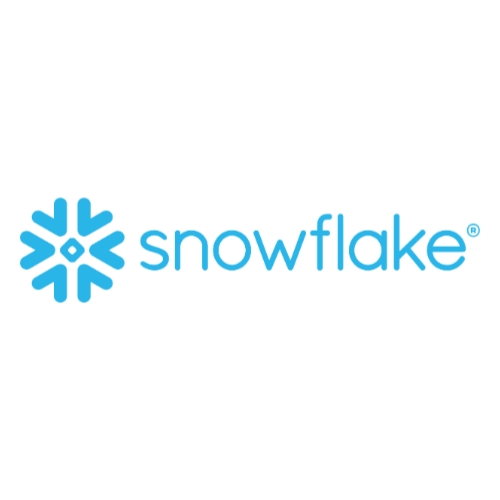In our study on AI-infused products, we wanted to get to the bottom of what really differentiates those who are leading the charge in AI and those who are falling behind. To create the study, we surveyed 310 U.S. companies in financial services, transportation and healthcare, and found many are using AI to guide sales, service, marketing and other areas. So what are the leaders doing differently? Read on to find out.
In our report, we refer to the most successful companies in leveraging AI-infused systems as “leaders.” These companies said their most successful such application generated extremely strong benefits. Overall, they were 21% of the companies that had developed AI-infused systems since 2020. We compare the leaders’ survey responses to companies whose most successful AI-infused system produced zero, minor or only moderate benefits. We refer to them as “laggards” in this report, which comprised 45% of the sample.
Differences between leaders and laggards
- Leaders spend more than the laggards
- $17.3 million average in 2023. Laggards spent an average of $14.7 million.
- In 2024-25, the average leader plans to spend $34.4 million vs. $24.0 million for the average laggard.
- Are more likely than those that produced the least benefits (laggards) to design systems that take control.
- Said their most beneficial AI-infused product or service delivered a 20% cost reduction vs. a 12% cost reduction reported by laggards, 17% revenue increase vs. an 8% increase for laggards, and a 33% cycle-time reduction in developing and instituting a plan vs. 19% for laggards.
- Leaders outshone laggards in most functions and in achieving higher percentage cost, revenue, cycle time and quality improvements.
Why are leaders generating bigger benefits?
- Leaders either implement these systems faster or work on more of them at the same time. They launched an average of eight AI-infused products and services in 2023 compared with six for laggards. Looking ahead, leaders plan to implement an average 10 such systems this year and next year, compared with 7 for the average laggard.
- Another key factor is CEO support: Some 23% of leaders said this was the case compared with only 12% at laggards.
- Leaders at developing AI-infused systems are better at determining what advice to give users (and not). Some 85% said they understand in advance what advice to provide and how frequently to provide it vs. 66% of the laggard firms.
- Leaders typically have more of the right data, and permission to use it than laggards. For example, 93% respondents from leaders said their firms had the right data compared with 69% of respondents from laggards.
- Equally as important, leaders appear to have a better understanding of what AI can – and can’t – do. In fact, 98% of leaders said their organizations understood the capabilities and limitations of AI compared with only 74% of laggards. Having such clarity increases the chances they don’t pursue AI-infused systems that turn out to be technologically infeasible or rejected by users.
What the best companies at AI-infused software do differently
When comparing leaders vs. laggards, we found the benefits depend on where an AI-infused application is used.
- For example, in strategic planning, the companies with the greatest benefits said their most beneficial AI-infused product or service delivered a 20% cost reduction (e.g., from pointing out flaws in the strategy, and thus which investments to end or curtail) vs. a 12% cost reduction reported by laggards. Leaders also reported a 17% revenue increase vs. an 8% increase for laggards, and a 33% cycle-time reduction in developing and instituting a plan vs. 19% for laggards.
- In marketing, leaders claimed a 34% revenue gain from AI-infused products and services (e.g., from advice on improving marketing campaigns) vs. a 28% revenue boost for laggards. Leaders also reported a 39% average cycle-time reduction (e.g., in creating campaigns) vs. a 29% reduction for laggards.
- In sales, leaders estimated a 34% cycle-time reduction (e.g., from advising on how much time to devote to each prospect) vs. a 21% cycle-time reduction for laggards. In customer service, leaders pointed to a 25% reduction in cycle time (e.g., problem resolution) vs. a 14% reduction for laggards.
The leaders in AI-infused products are clearly distinguishing themselves through several key factors that set them apart. By investing more resources, implementing the AI systems faster and securing strong CEO support, leaders achieve significantly greater benefits in cost reduction, revenue increase and cycle-time improvements. The success stories from these leading companies offer valuable insights into how to harness AI’s full potential and stay ahead in a competitive landscape. Download our full report on AI-infused products here.

The AdaptiveOps Revolution
Too many companies are still building digital products like they’re pouring concrete: rigid, brittle, and already outdated the moment they go live. Meanwhile, your business moves fast (and your market shifts faster). In this article by Chief Technology Officer Derek Perry, he introduces AdaptiveOps, our approach to helping organizations move from static systems to living ones; digital infrastructure that evolves in real time based on real-world signals

Land the Job and Impress Your Client (Using AI Smartly)
AI has completely changed the way people apply for jobs. Résumé templates, cover letter generators, and interview prep bots are just a prompt away. In this article by Senior Talent Acquisition Consultant Sarah Falzone, learn how to use AI to make sure your application stands out, not blends in.

How AI Helped Me Think Like a Designer Before I Had One
When a UX gap threatened to slow a critical user flow update, our product team had no choice but to adapt. In this article, Director of Product Brittany Langosch discusses how although there's no substitute for a talented designer, using AI tools like ChatPRD and V0 can support fast collaboration and clear decision-making in a pinch.

Snowflake Summit 2025 Announcements
Snowflake Summit 2025’s latest announcements made it clear: the path to genuine AI-driven impact hinges on frictionless access to data, the ability to act on it with clarity, and absolute confidence in its protection. Learn more about how they're making that happen for customers in this article.
